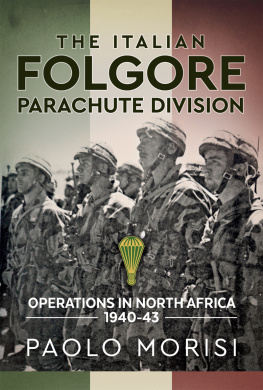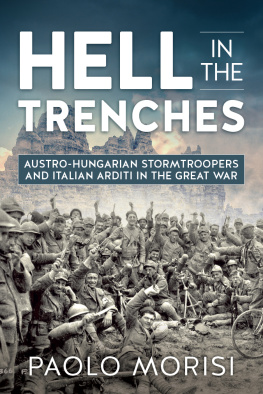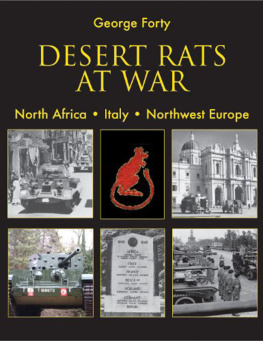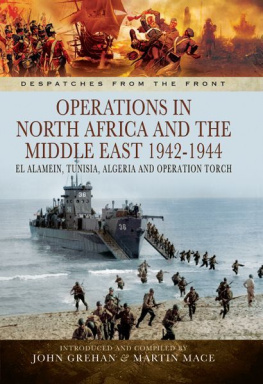Paolo Morisi - The Italian Folgore Parachute Division: Operations in North Africa 1940-43
Here you can read online Paolo Morisi - The Italian Folgore Parachute Division: Operations in North Africa 1940-43 full text of the book (entire story) in english for free. Download pdf and epub, get meaning, cover and reviews about this ebook. City: Solihull, year: 2017, publisher: Helion and Company, genre: History. Description of the work, (preface) as well as reviews are available. Best literature library LitArk.com created for fans of good reading and offers a wide selection of genres:
Romance novel
Science fiction
Adventure
Detective
Science
History
Home and family
Prose
Art
Politics
Computer
Non-fiction
Religion
Business
Children
Humor
Choose a favorite category and find really read worthwhile books. Enjoy immersion in the world of imagination, feel the emotions of the characters or learn something new for yourself, make an fascinating discovery.
- Book:The Italian Folgore Parachute Division: Operations in North Africa 1940-43
- Author:
- Publisher:Helion and Company
- Genre:
- Year:2017
- City:Solihull
- Rating:3 / 5
- Favourites:Add to favourites
- Your mark:
The Italian Folgore Parachute Division: Operations in North Africa 1940-43: summary, description and annotation
We offer to read an annotation, description, summary or preface (depends on what the author of the book "The Italian Folgore Parachute Division: Operations in North Africa 1940-43" wrote himself). If you haven't found the necessary information about the book — write in the comments, we will try to find it.
The key theme of the book is the paratroopers involvement in the Axis war effort through an analysis of their training, weaponry and battle tactics. Another key focus is an assessment of the Folgores specific role during the major battles of the North African campaign. It covers in detail, for example, the Folgores first fierce military engagement against British and New Zealand troops during the Battle of Alam El Halfa in September 1942. It then details a number of smaller actions that preceded the Battle of El Alamein such as the counter-attack during the British Operation Beresford, which led to the capture of Brigadier General G.H. Clifton, commander of the New Zealand 6th Brigade, by a patrol of Folgore soldiers. The focus then shifts upon the Folgores major engagement of the campaign during the Battle of El Alamein: Operation Lightfoot, which was launched by General Montgomery on 24 October 1942. It was designed to break through the Italian-held southern sector of the El Alamein line, where the Bologna, Brescia, Pavia and Folgore Divisions anchored the Axis right flank.
While describing key events during this operation, the book also highlights how the Folgore used unusual tactics to repulse the massive enemy-armored attack. This included letting the enemy advance into a cul-de-sac and then launching a counter-attack against its armored vehicles and infantry units from all sides and by a combination of fire from 47 mm anti-tank guns, mortars, hand grenades and other incendiary devices. It describes the desperate retreat in the desert of the Italian units as a result of the collapse of Axis military defenses in November 1942. Finally, it highlights the role of the paratroopers during the last battles in Tunisia - especially those in defense of the Mareth line and Takrouna in the spring of 1943. Illustrated with rare archival photographs, detailed maps and specially commissioned artwork, this volume offers a fascinating insight into a little-studied aspect of Axis forces.
The volume draws heavily upon both Axis and Allied (Britain and New Zealand) archival sources such as the war diaries and the post-battle reports of the military units engaged in North Africa. It thus sheds new light into one of the most important campaigns of the Second World War. By drawing from archival sources from both sides, it also furnishes a more complete and balanced perspective on a critical juncture in the war such as the Battle of El Alamein.
Paolo Morisi: author's other books
Who wrote The Italian Folgore Parachute Division: Operations in North Africa 1940-43? Find out the surname, the name of the author of the book and a list of all author's works by series.














